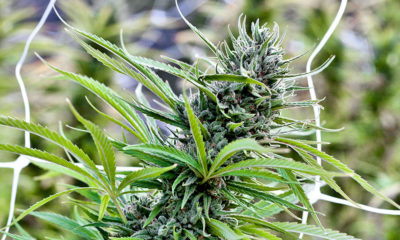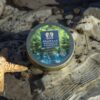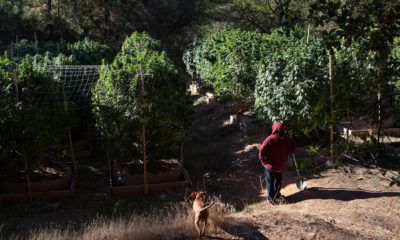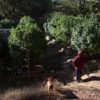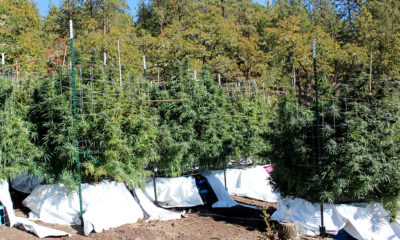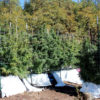
PHOTOS Swami Select
Cultivation
Learn How to Harvest Cannabis Like a Pro
Swami takes us on a step-by-step journey of how the harvest works at Ganja Ma Gardens.
The first rains have come and gone, the mornings are getting frosty, cannabis harvest is in full swing and it’s all hands on deck! The cutting down of the girls can extend for four or five weeks depending on the weather and how many different cultivars are being harvested. Preparation beforehand is the key to a successful harvest because improper drying and curing can ruin a good crop.
An important thing for every cannabis farmer to remember is that it takes almost as much square footage to dry cannabis as it does to grow it. So, if your number of plants has increased, so must the drying area. At Ganja Ma Gardens, we hang the full smaller plants and cut branches from the bigger ones, placing them on nylon netting hung vertically in our barn. Hauled up out of the way in the off season, this netting can be reused for many years.
The barn is at the edge of a Douglas fir forest which shades the building and helps keep the temperature from fluctuating too much. The trees also perfume and purify the air. It is a timber-frame barn built of wood, much of it harvested from fallen trees on our land. Cannabis drying in a wooden barn is rather like fermenting grapes in a wine barrel.
What Month Should You Harvest Your Cannabis Plants?
We always choose a few cultivars that mature early, (starting in late Sept./early Oct.) some that are ready for harvest in mid-Oct., and others that ripen late in the month. We like staggering the harvest because it requires less drying space.
The big question is: What is the absolute best day to cut a particular plant?
The key indicator is the look of the pistils – the little hairs that protrude out of the flowers. When the plant is ripening, these pistils are a pale whitish to translucent yellow-green, curving upward at the very top of the bud and around the bracts. When the majority of these pistils are rusty-brown and crinkled looking, the flowers are near their peak.
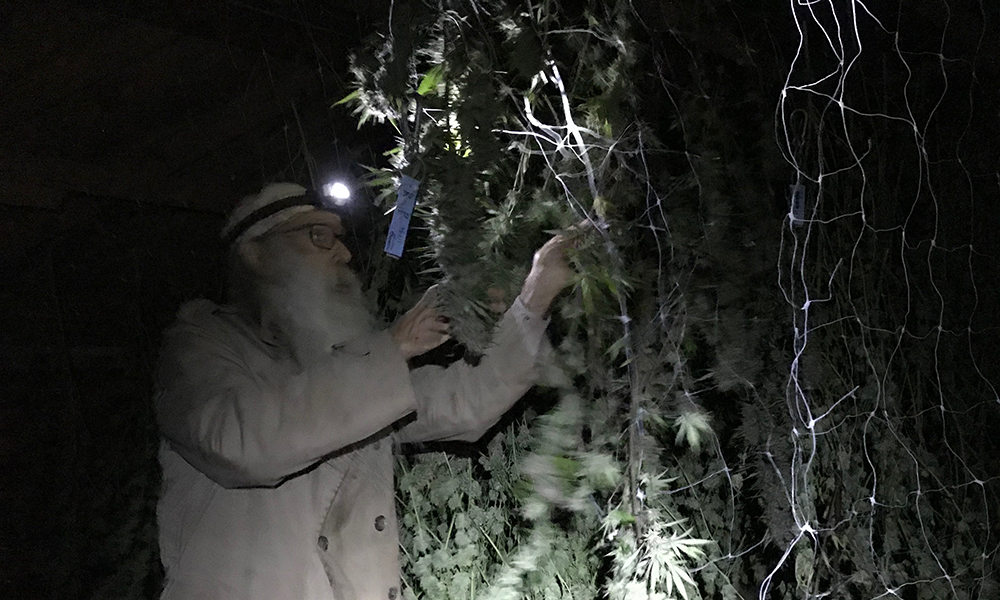
To make the final decision for the day of harvest, I have my own special way of asking the plant herself if she is ready to come in. On the day before the cut I go around to each plant that looks ready and, while gently touching a leaf, ask her: “Are you ready to come in tomorrow? Do you want to come in tomorrow? Should I leave you to be cut on a later day?”
If she says yes to the first two questions and no to the third one, she will come in the next morning. If she says no and no, leave me to a later day, I won’t cut her.
At this point you must think I am crazy, talking to my plants, or rather, listening to them. My technique involves kinesiology, something I learned years ago from a favorite acupuncturist. By trying to pull my index finger apart from my thumb as I ask the question, my body gives me the answer. If I can’t pull my fingers apart with all my strength, the answer is “yes.” If I can’t hold them together no matter how hard I try, the answer is “no.”
Once the plants for harvest are selected, the team goes out and pulls off any remaining yellow or brown leaves. Yellow leafing has been an ongoing process starting in early September, but this final clean up helps to reduce the drying time in the barn.
What Time of Day Should You Harvest Cannabis Plants?
Harvest starts before first light at five thirty in the morning when the terpenes and cannabinoids are at their peak. We usually take about 20 plants a day, so with our 200 plant count there will be 10 harvest mornings.
For the cut, the team is all bundled up, wearing headlamps, gloves, long johns and overcoats. It’s cold and dark – only 25 at times. Occasionally, frost sparkles on the trellis poles. A heavy frost can damage or even kill a plant, especially if there are two or three frost days in a row. We lost about 10 plants last year, so if the weather report issue a frost advisory, we cover each plant with a piece of frost cloth, supported by bamboo trellising.

For trellising in the garden, bamboo poles six feet long are attached horizontally with zip ties to eight foot vertical poles, which if kept dry, can be used for many years. If the frost cloth is used, that comes off first. If there is no frost cloth, the first step at the crack of dawn is cut the zip ties on the bamboo poles holding up the heavy branches.
A clean 10 x 12 tarp is placed on the ground next to the plant and the cutting begins. We harvest the whole plant at once, cutting each branch off the trunk and placing it gently on the tarp. If it is a very small plant we cut the whole thing, trunk and all, with loppers or a pruning saw. The corners of the tarp are then hooked together with a carabiner through the grommets, the Metrc label attached, and the tarp is carried to the trailer parked outside the garden gate. When the trailer is full it is pulled to the barn and each plant is weighed in its tarp, then carried into the barn for hanging.
How to Dry & Weigh Your Cannabis Harvest
For legal cannabis in California, each plant needs to be weighed immediately after cutting and that weight needs to be reported to Metrc. This little dance needs to be choreographed into your harvest plan. The scale needs to be checked and certified each year by the County Agricultural commissioner, so make sure your annual scale certificate is up to date.
Figure that each batch harvested on a particular day needs at least 10 days and often two weeks to dry. Of course, the actual drying time depends on the inside and outside humidity and temperature. This is where fans and dehumidifiers come in.
The rule of thumb is harvest at 60 degrees and 60% humidity. If you are caught harvesting in the rain, its best to first hang the plants to drip off outside the final drying area before hanging. In this case, set the dehumidifier to drop the humidity to about 45% for the first day or two.
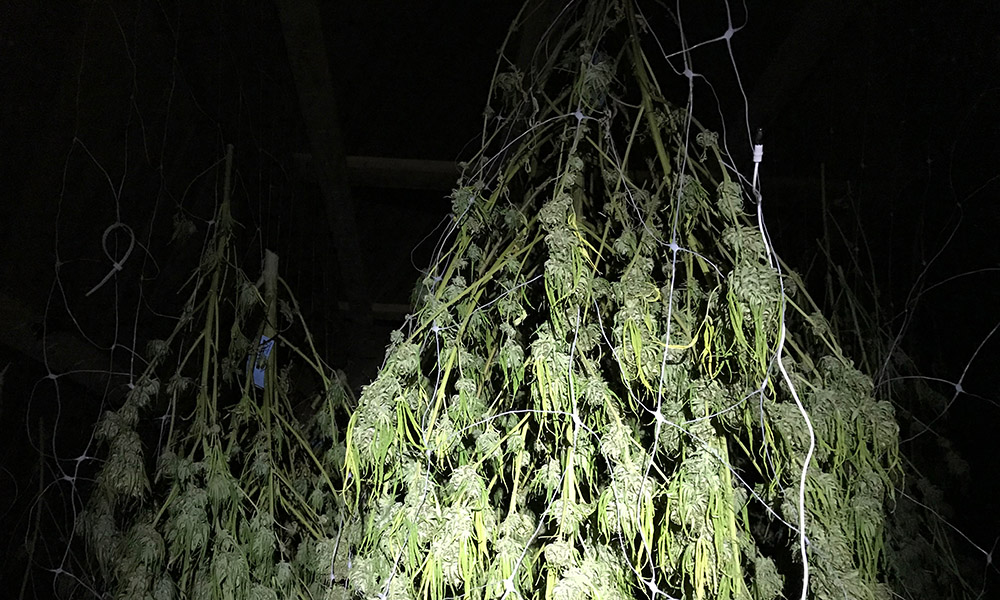
After two weeks of drying, you can tell it’s time to take down the plant if a little twig holding a bud snaps instead of bends. For take down, a sheet of brown kraft paper, about six feet long, is cut from a 40 inch wide roll and laid on the floor under the hanging plant. After taking down 15 to 20 branches, we roll up the paper like a burrito, fold over one end and tape it with packing tape.
Be sure to tape the blue Metrc tag to the roll, write the plant name and number the rolls for each plant with a Sharpie. We keep all the paper “cannabis burritos” in the barn, even if some plants are still hanging. The bags stay in the climate-controlled barn until the buds are bucked down off the branches.
Soon the whole floor of the barn is filled with standing paper cannabis burritos. This makes it easy to estimate the yield of a particular plant just by counting the number of brown paper bags for each plant. Bucked buds are then stored in Ostrich Bags – giant turkey oven bags – which are also kept in the climate controlled barn in the classic yellow-top black-bottom tubs awaiting trimming. You may need to “burp” the tubs from time to time so that all the branches inside end up with the same residual moisture content.

Harvest is a stressful time with early rising and lots of hard work, but there is nothing quite like the feeling you get when all the girls are cut and hanging in the barn. Seven months of work has come to fruition. Then you get to roll up a fatty of the new harvest and sample the first nugs of the new crop! Mind you, it is still not really fully cured for another month or so at least, but I can never resist firing one up as soon as it is dry and trimmed.



